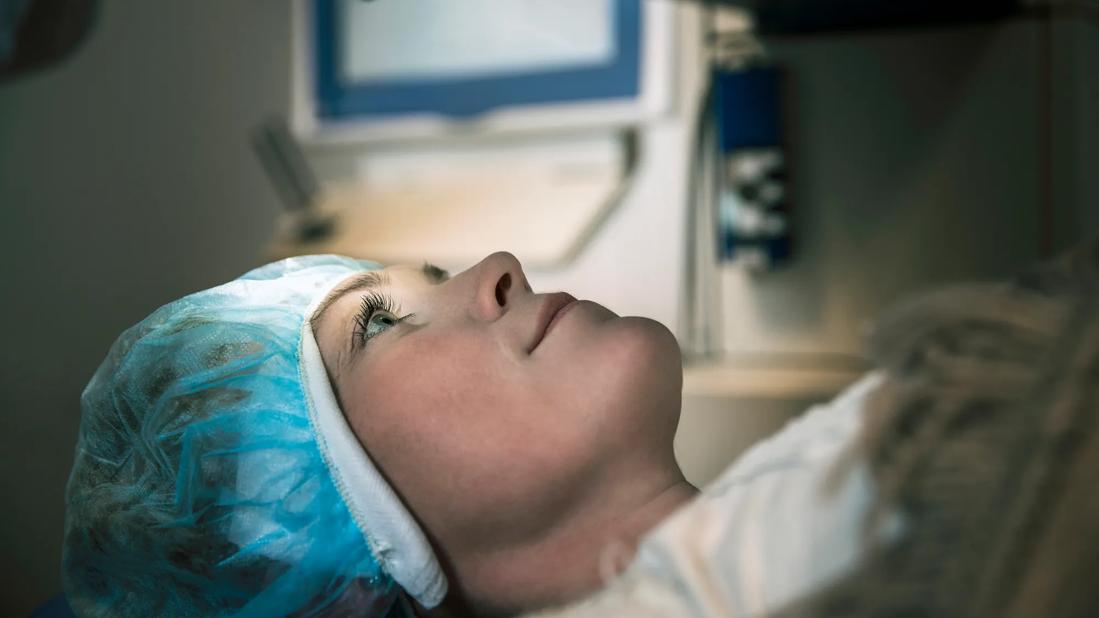Immediate implications for refractive surgery

Strength is more important than shape when assessing corneal health. While the two qualities are linked — with weaker stromal fibers causing the telltale protrusion in keratoconus, for example — weakness may develop long before the distorted shape does.
Advertisement
Cleveland Clinic is a non-profit academic medical center. Advertising on our site helps support our mission. We do not endorse non-Cleveland Clinic products or services. Policy
“Shape is probably a very late feature of the disease,” says William J. Dupps Jr., MD, PhD, a cornea and refractive surgery specialist at Cole Eye Institute. “If we’re only looking at corneal shape, we may not be detecting early disease, which may be hindering us from making better decisions about patient care.”
Determining when to perform corneal cross-linking is one example. For this treatment, which reinforces corneal fibers, earlier is better. Cross-linking does not restore lost vision, only prevents further visual distortion due to weakening. So, if corneal weakening can be detected earlier, cross-linking will help more people retain vision despite having keratoconus.
Better detecting corneal weakness also may help direct the selection of refractive surgery technique. Procedures like laser in situ keratomileusis (LASIK), photorefractive keratectomy (PRK) and small-incision lenticule extraction (SMILE) all work by removing corneal tissue, modifying the thickness of the cornea and changing its shape.
“Obviously there’s only so much tissue you can remove before making a weaker cornea unstable,” says Dr. Dupps. “Assessing corneal strength before refractive surgery may help us prevent some cases of postop corneal ectasia, particularly in patients with subclinical keratoconus, who may have had a completely normal preop exam.”
Current screening for refractive surgery involves assessing cornea shape but not cornea strength, he notes. That could change thanks to a study he published last year in Translational Vision Science & Technology. The study was the first to use optical coherence elastography (OCE) in live patients with keratoconus. It reported new findings about stromal stiffness, which potentially could become a disease biomarker.
Advertisement
Researchers used OCE to study 36 eyes, 15 with keratoconus and 21 without. A flat lens was gently pushed onto and then released from each cornea as optical coherence tomography tracked the displacement of corneal tissue. Researchers then used force and displacement measurements to calculate corneal stiffness in anterior and posterior regions of the stroma. A ratio of anterior stiffness to posterior stiffness helped researchers compare eyes with and without keratoconus.
Mean stiffness values were higher in normal eyes (1.135 ± 0.07, mean ± standard deviation) than in keratoconus eyes (1.02 ± 0.08), P < 0.001. Anterior stiffness was much lower in keratoconus eyes.
“There’s a presumption, based on good evidence, that stromal fibers are stronger in the front of the corneal stroma than in the back,” says Dr. Dupps. “It has to do with the cornea’s microstructure, an interwoven pattern of collagen fibers. We confirmed that the presumption was true in normal eyes. But it wasn’t true in eyes with keratoconus. Those corneas were not as strong in the front.”
This may indicate that the keratoconus disease process starts at the front of the cornea, where the epithelium meets the stroma, he notes. This fits with early histology studies and emerging research on the causes of keratoconus.
In refractive surgery worldwide, there has been a rising preference for SMILE due to its presumed strength advantage over LASIK. Instead of the circular cut required for LASIK flaps, SMILE uses a much smaller incision, leaving most anterior stromal fibers intact.
Advertisement
SMILE may be beneficial if the patient’s cornea is normal — weaker in the back. But if the patient has early keratoconus, and the corneal fibers are weaker in the front, any disturbance of stronger fibers in the back is not preferable.
“This may explain why we continue to see case reports of patients developing corneal ectasia after SMILE,” says Dr. Dupps. “If someone looks like they’re not an ideal candidate for LASIK because of corneal shape abnormalities or because their cornea is thin, thus raising a concern of corneal weakness, they’re probably not a great candidate for SMILE either.”
PRK would be a better option, he says. PRK ablates only the most superficial part of the cornea (the weakest part in patients with keratoconus), not working deep into the stroma or requiring a flap.
The next step in this research should be a larger study involving patients with varying grades of suspected keratoconus — mild, moderate and severe — to see if there’s a spectrum of weakness in the anterior cornea. That may lead to the development of more sensitive and specific modes of assessing corneal health, even before changes in shape appear.
“Currently we are missing some important data when we screen refractive surgery candidates,” says Dr. Dupps. “We shouldn’t assume that one type of procedure is safer than another if we don’t know the structural properties of an individual cornea. OCE may help us better assess those properties in order to customize treatment for each patient.”
Advertisement
Advertisement

Motion-tracking Brillouin microscopy pinpoints corneal weakness in the anterior stroma

Registry data highlight visual gains in patients with legal blindness

Prescribing eye drops is complicated by unknown risk of fetotoxicity and lack of clinical evidence

A look at emerging technology shaping retina surgery

A primer on MIGS methods and devices

7 keys to success for comprehensive ophthalmologists

Study is first to show reduction in autoimmune disease with the common diabetes and obesity drugs

Treatment options range from tetracycline injections to fat repositioning and cheek lift